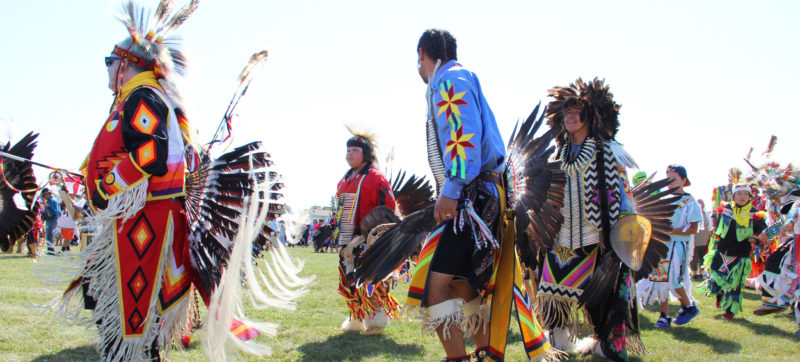This is a guest post from Sakatay Global
(Member since 2019)
It’s June! This means it’s National Indigenous History Month – – a time to recognize and celebrate the cultures and contributions of First Nations, Inuit and Métis peoples in Canada. It’s a time to learn and reflect, to connect and build relationships. Do you know how it all came to be?
In 1996, Canada designated June 21 as National Aboriginal Day to recognize and honour the history, heritage and diversity of Indigenous peoples in Canada, in follow up to recommendations from RCAP, the Royal Commission on Aboriginal Peoples.
In 2009, the House of Commons unanimously passed a motion to designate June as National Indigenous History Month, then in 2017, National Aboriginal Day was changed to National Indigenous Peoples Day. These events happened because of ongoing pressure and advocacy from our Indigenous leaders and communities.
The history
Aboriginal? Indigenous? Why the name changes? Aboriginal is a legal term embedded in the Constitution Act of 1982. In 2007, the United Nations General Assembly adopted the United Nations Declaration on the Rights of Indigenous People (UNDRIP). This international human rights instrument affirms the rights of Indigenous Peoples to self-determination over their cultures, languages, governance systems and traditional lands and resources. This began an international shift worldwide as countries began to explore their roles in colonization.
In 2008, Canada made an apology to the survivors of Indian Residential Schools and in 2009 provided a mandate for the Truth and Reconciliation Commission to learn about the impacts of these schools on survivors and their families. The truth telling and reconciliation process was a part of an overall holistic and comprehensive response to acknowledge the injustices and harms experienced by Indigenous people and the need for continued healing and establishing new relationships.
When the TRC Calls to Action came out in 2015, it laid out a framework for reconciliation and signaled a commitment towards addressing historic injustices and creating equity for Indigenous people in Canada.
The Indigenous lens
One of the critical components of reconciliation is to learn about Canada from an Indigenous lens. It means being brave and being willing to understand a different narrative from what we were all taught in school.
It’s important to note that First Nations, Inuit and Métis peoples all have their own unique histories, language and culture; within those groups, there are distinct and different nations, communities and traditions. There are national, regional and local nations, political entities, organizations and associations that can all help to tell our stories.
This year, as we cope with the COVID-19 pandemic, consider looking for ways to celebrate National Indigenous History Month by attending a virtual event or taking a virtual museum tour, listening to a podcast featuring Indigenous history, humour, or music makers, watching Indigenous films or TV programs, reading books by Indigenous authors, or taking an online course to learn more. The Indigenous Circle Approach to Cultural Confidence™ is a wonderful “how-to” guide for reconciliation.
The Mi’kmaq people
Nova Scotia is within Mi’kma’ki, the territory of the vibrant and beautiful Mi’kmaq people. The Mi’kmaq signed Peace and Friendship Treaties with newcomers to Canada beginning in 1752 and have long been known for being friendly and welcoming.
In Nova Scotia, October 1st is Treaty Day, and October is Mi’kmaq History Month, mandated to help Nova Scotians build awareness of Mi’kmaq history and heritage. There are 13 Mi’kmaw communities: five in Cape Breton and eight on the mainland. In addition, there is a large population of Indigenous people living in Halifax and in rural areas throughout Nova Scotia.
Mi’kmaw people in Nova Scotia provide an untapped market for Halifax Chamber of Commerce members as customers and as business partners. It’s time to work together to build a province that reflects the diversity of its people and ensures that all benefit from a quality standard of living.
It is critical that Nova Scotians learn about and from their Mi’kmaw neighbours. It is critical that visitors to Nova Scotia know that Mi’kmaq are the original stewards and caretakers of this land. It is critical that Mi’kmaq are visible throughout Nova Scotia and seen in ways that are positive and reflective of the beauty of the land, the people and the culture.

There are many ways to connect, to learn, and to build relationships and partnerships. Here are some suggestions of websites you can check out to start building your cultural confidence.
Business entities:
- Ulnooweg
- Nova Scotia Indigenous Tourism Association
- Canadian Council for Aboriginal Business
- Mi’kmaq Maliseet Nation News
Political entities:
- Assembly of Nova Scotia Mi’kmaq Chiefs
- Native Women’s Association of Nova Scotia
Kwilmu’kw Maw-klusuaqn Negotiation Office - Mi’kmaq Rights Initiative
- Confederacy of Mainland Mi’kmaq
- Union of Nova Scotia Mi’kmaq
- Assembly of First Nations for Nova Scotia and Newfoundland Regional Office
- Native Council of Nova Scotia
Educational entities:
- Mi’kmaw Native Friendship Centre
- Nova Scotia Treaty Education
Cultural entities:
- Wagmatcook Culture and Heritage Centre
- Mi’kmawey Debert Cultural Centre and Interpretive Trail
- Bear River Heritage and Cultural Centre
In this era of reconciliation, it is important to realize the importance of engaging with the First Peoples of this land in a way that is authentic and meaningful. There are many Mi’kmaw resources and partnership opportunities. Friends United is an example of an entity that works with Mi’kmaw artists as an ally and a supporter.
Don’t be afraid. Start reaching out. Recognize building trust takes time. Be patient. Come from a place of service to community. Whatever your interest or area of focus, there is a Mi’kmaw organization that can help build capacity and support the recruitment and retention of Indigenous customers and partners––creating more economic and social opportunities for all. And at the end of the day, what do we want? A better world for our children, all of our children. We do this by working together.
< Back to Articles | Topics: Trends

